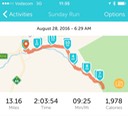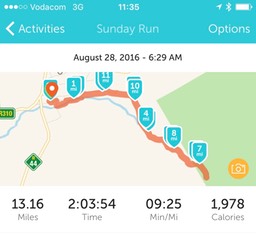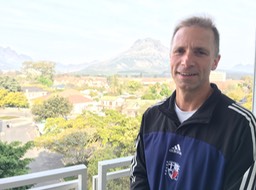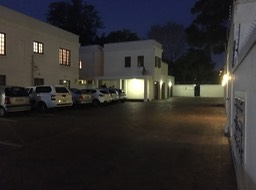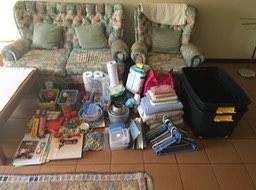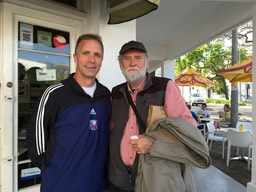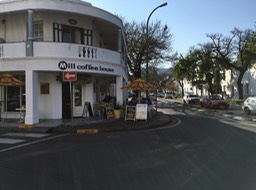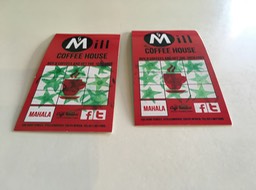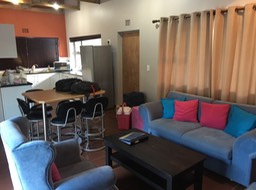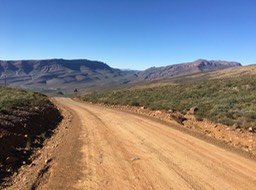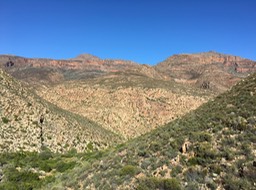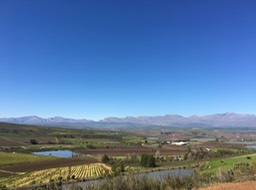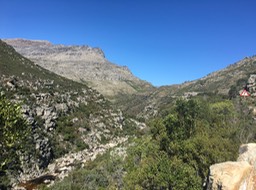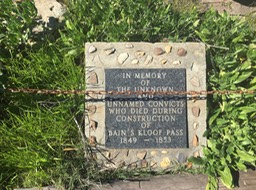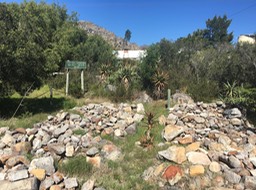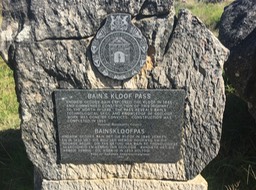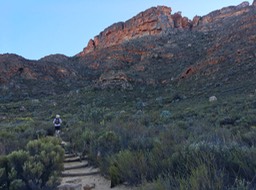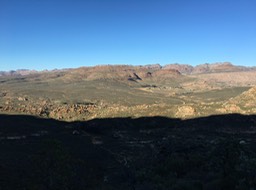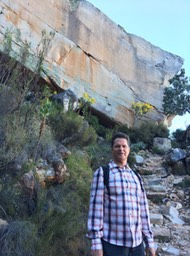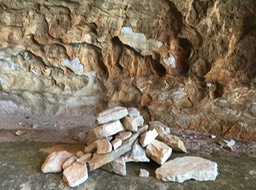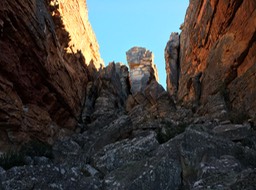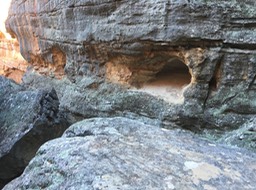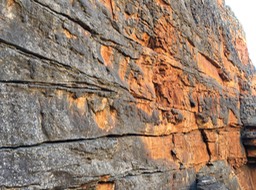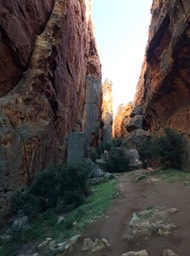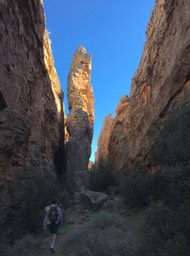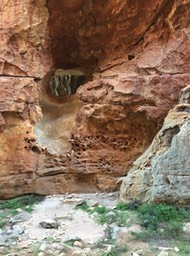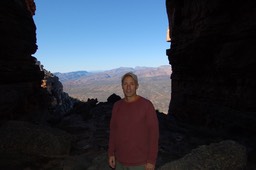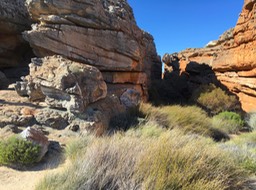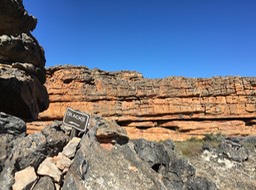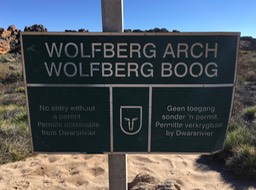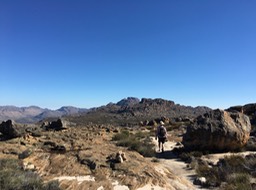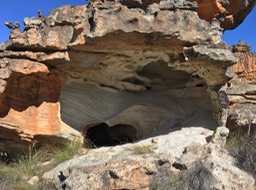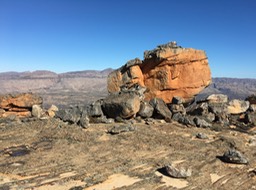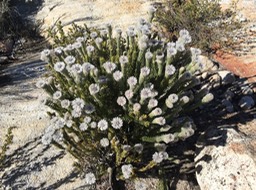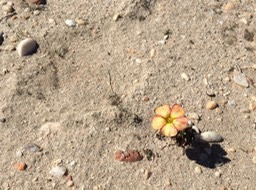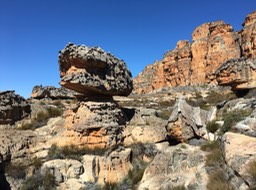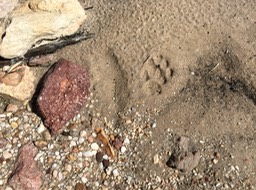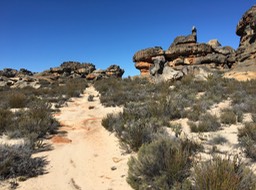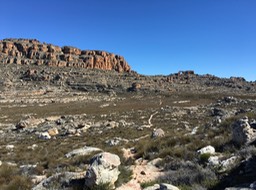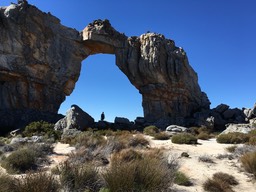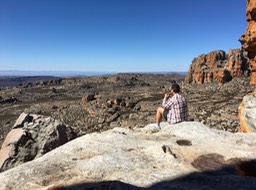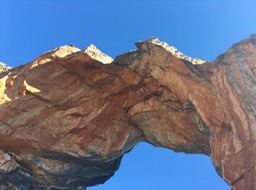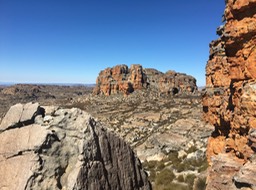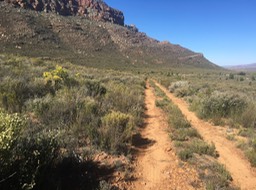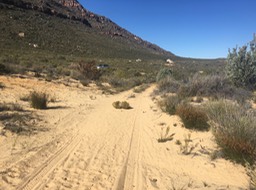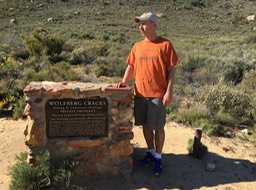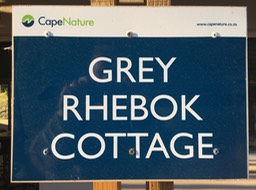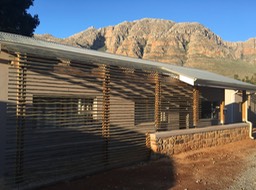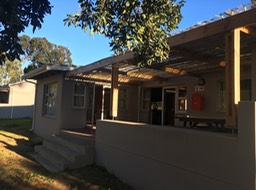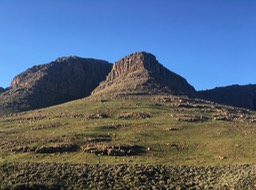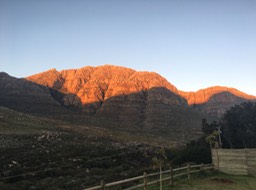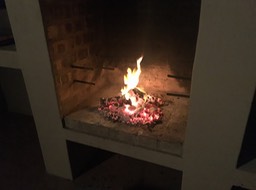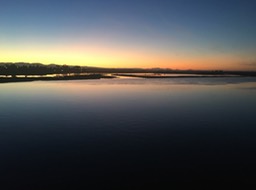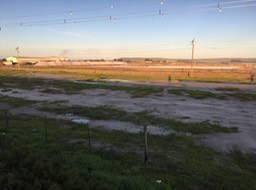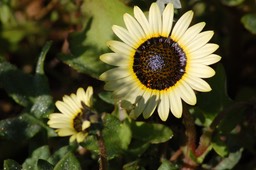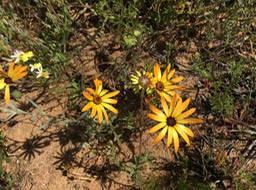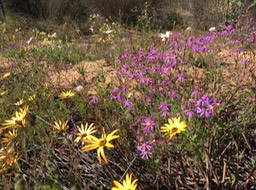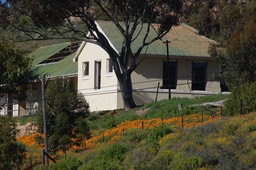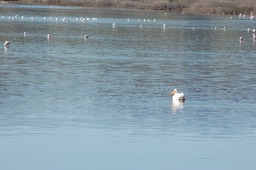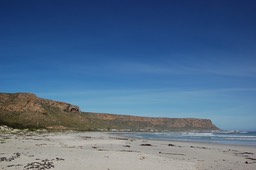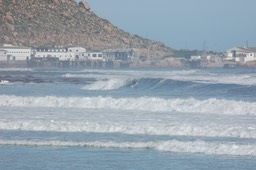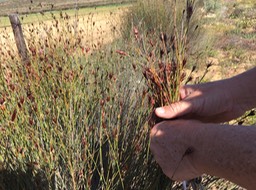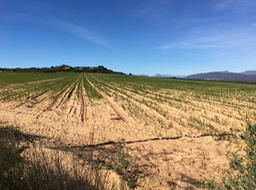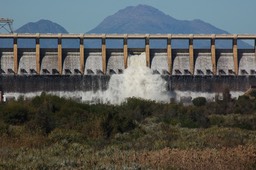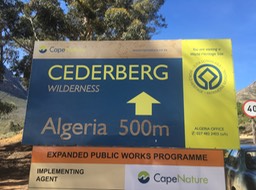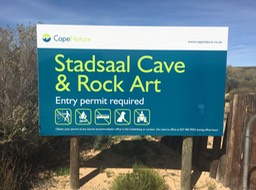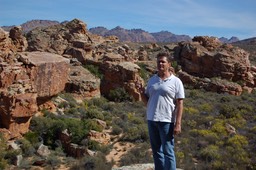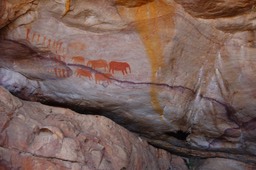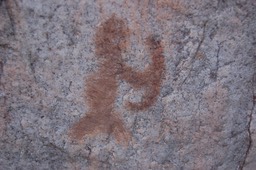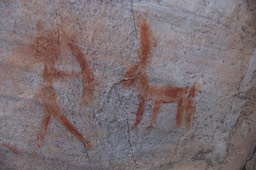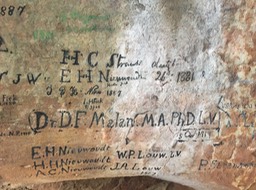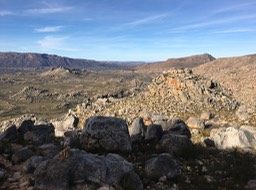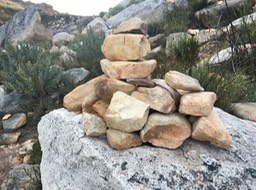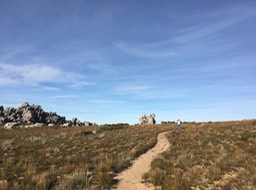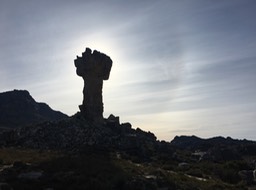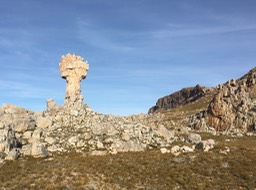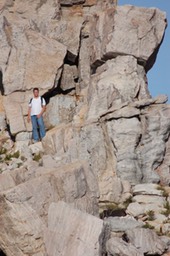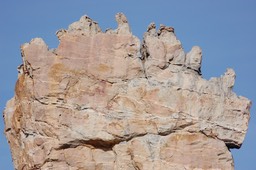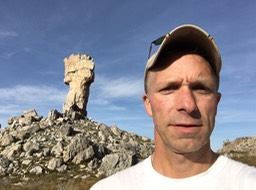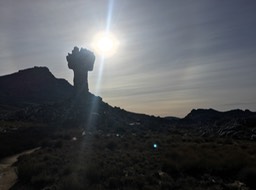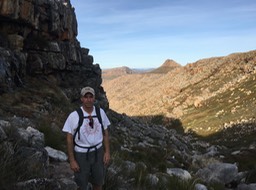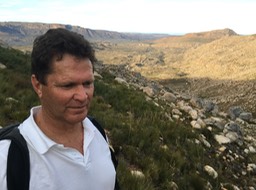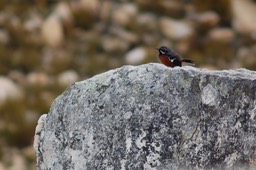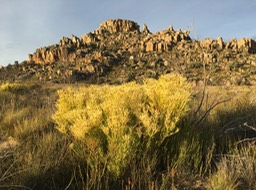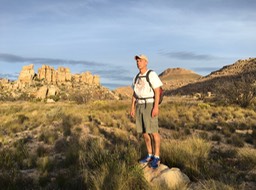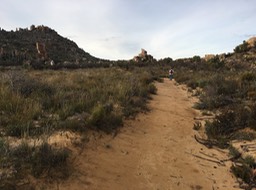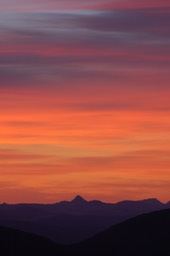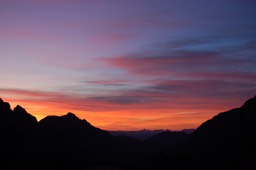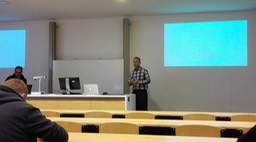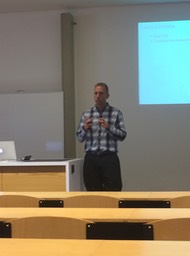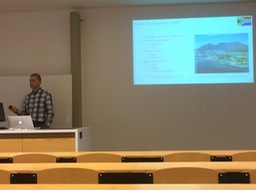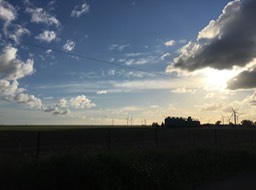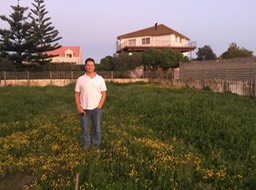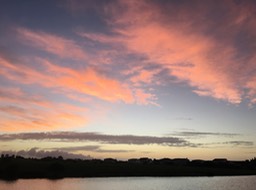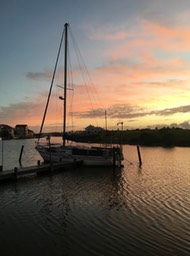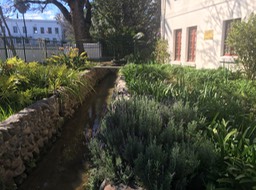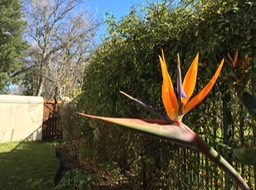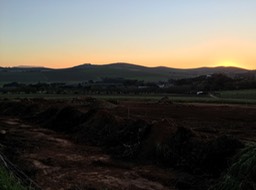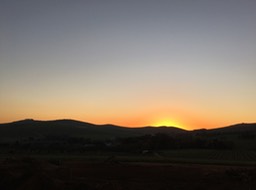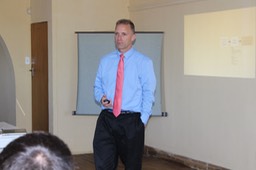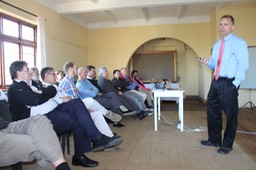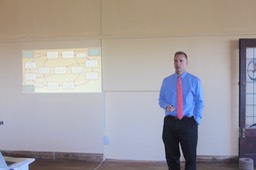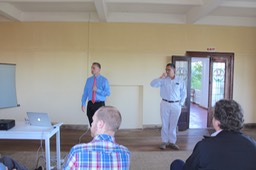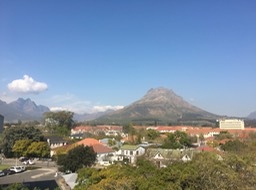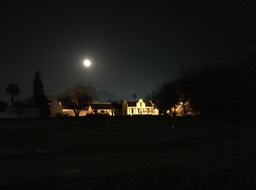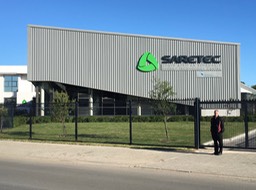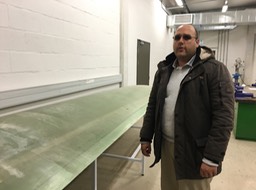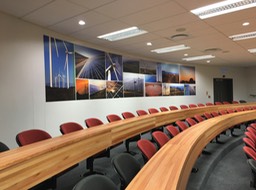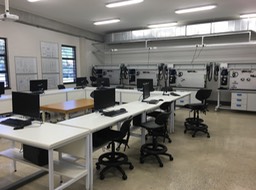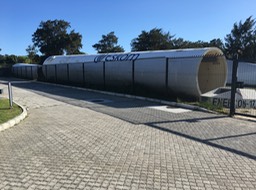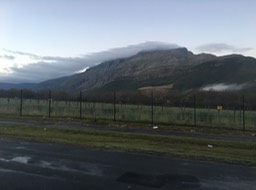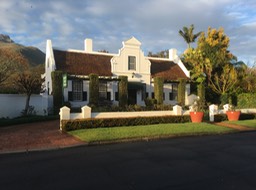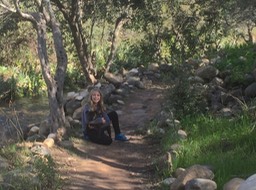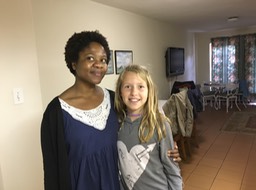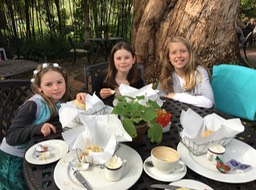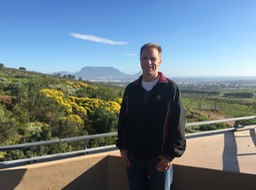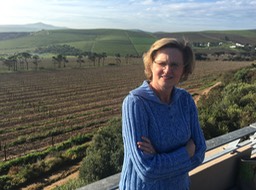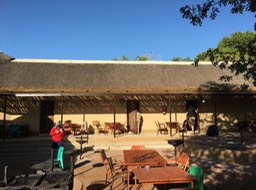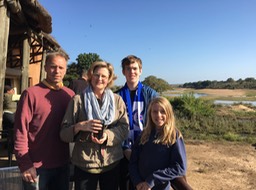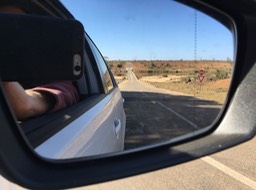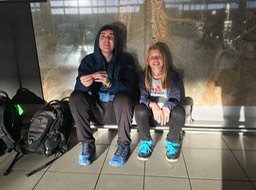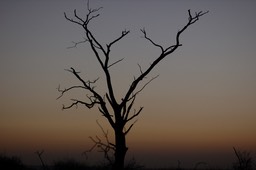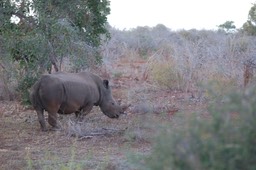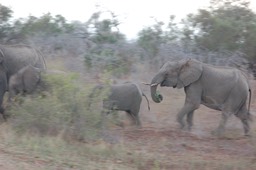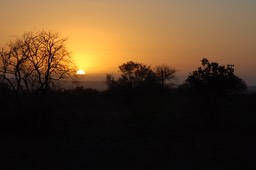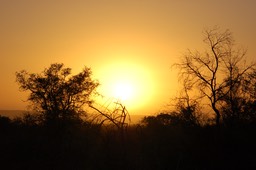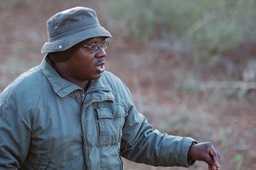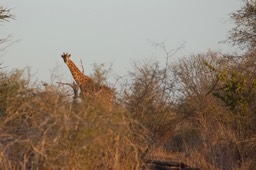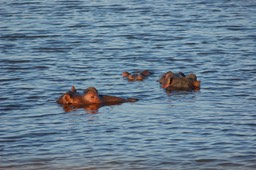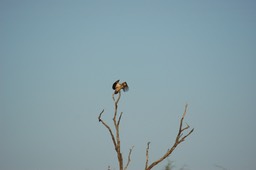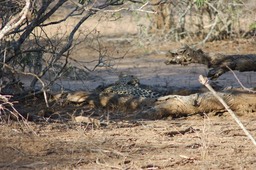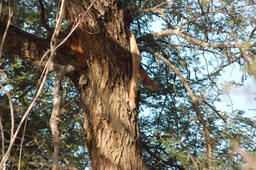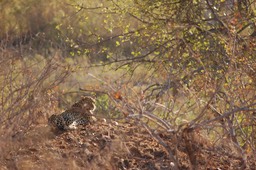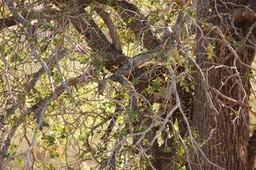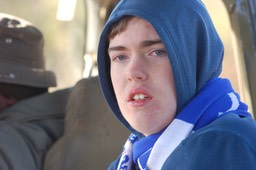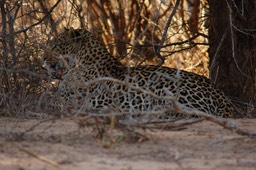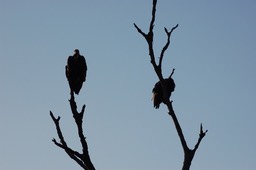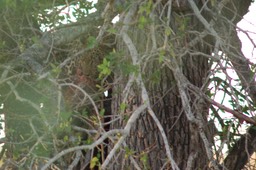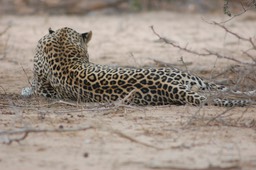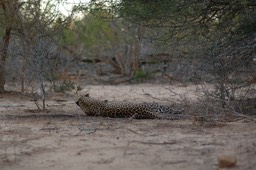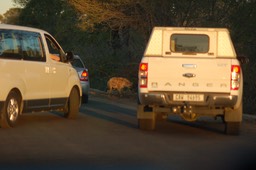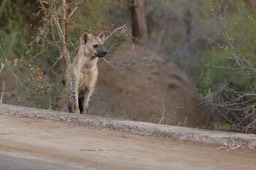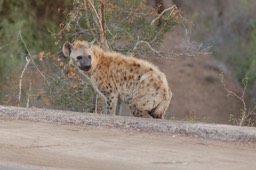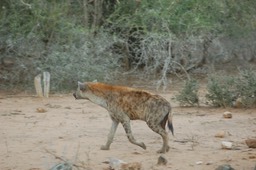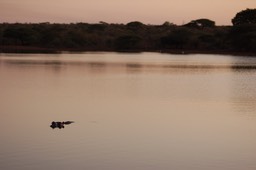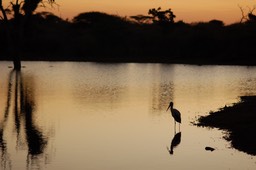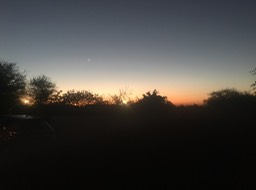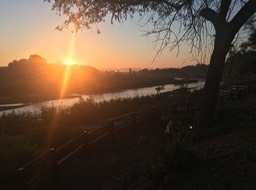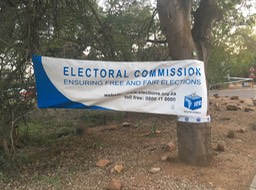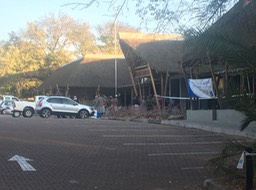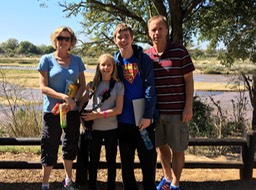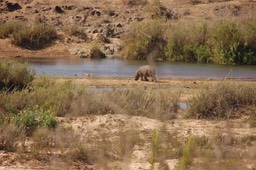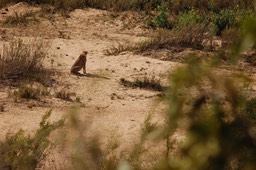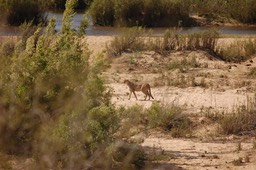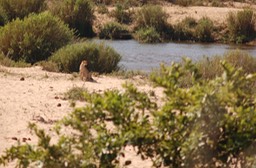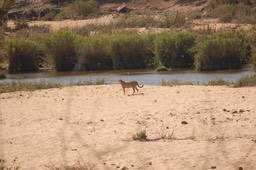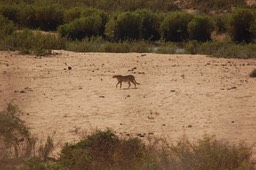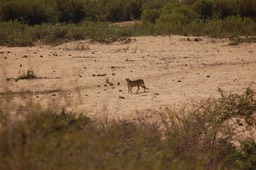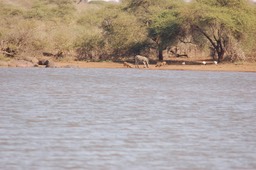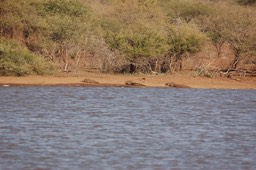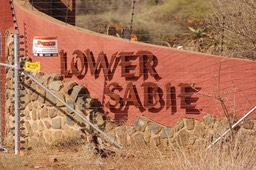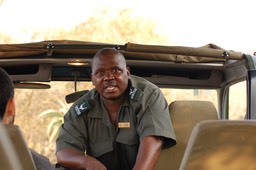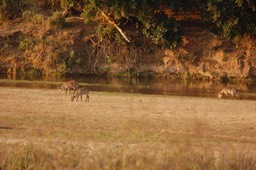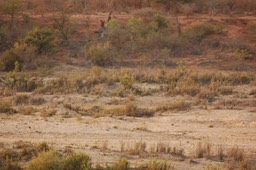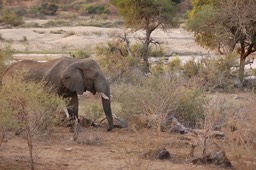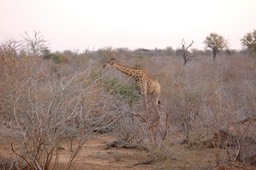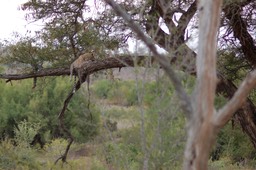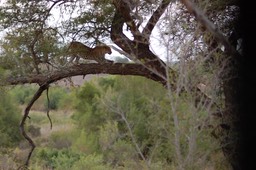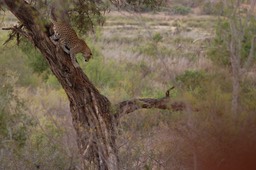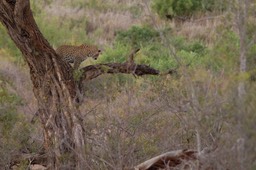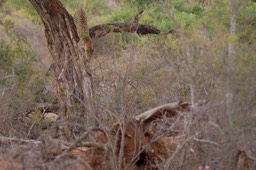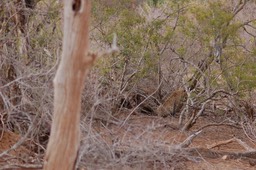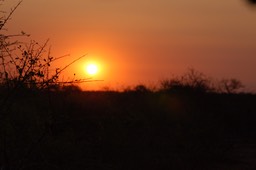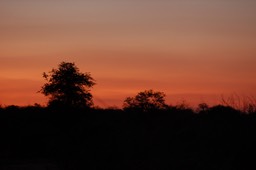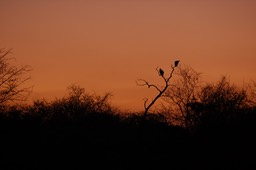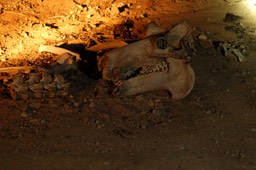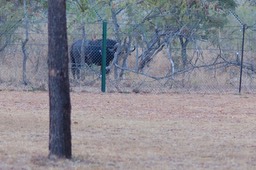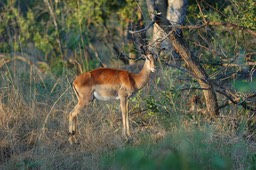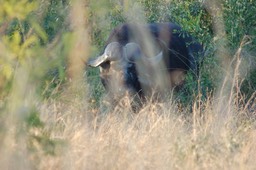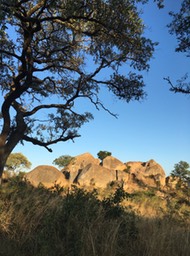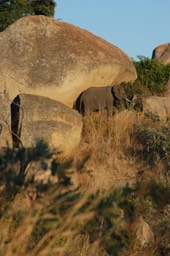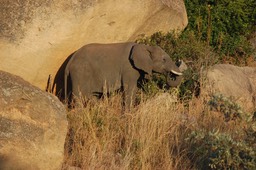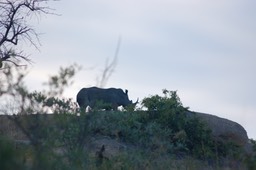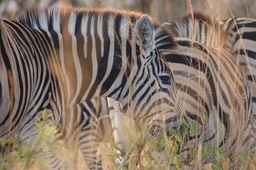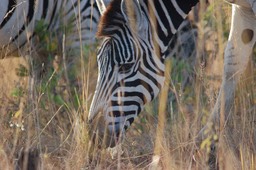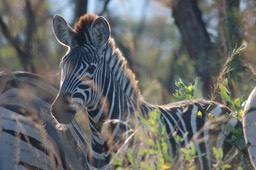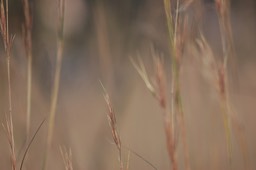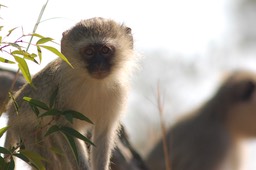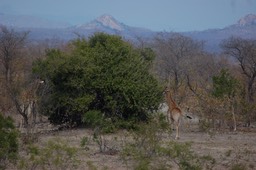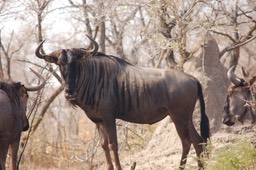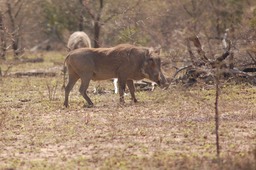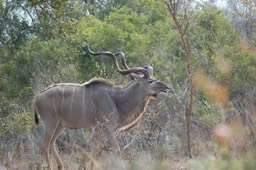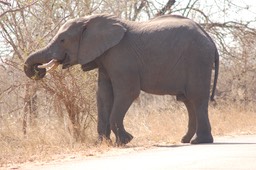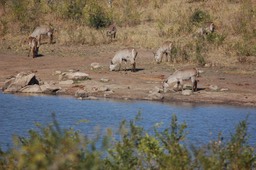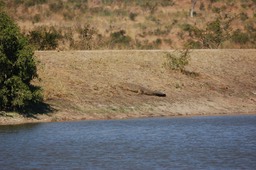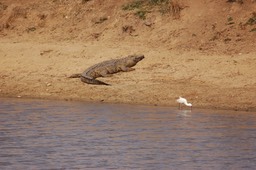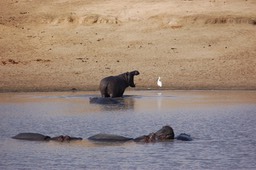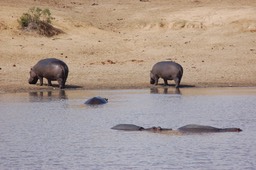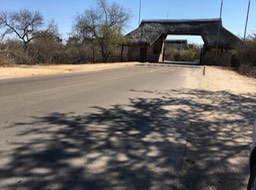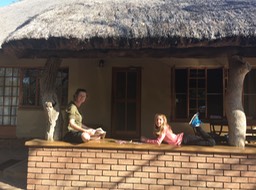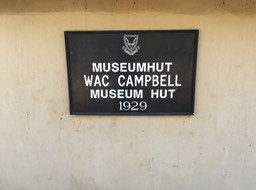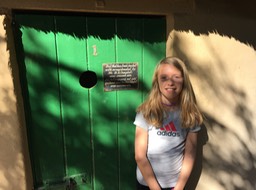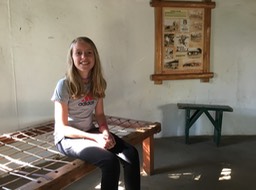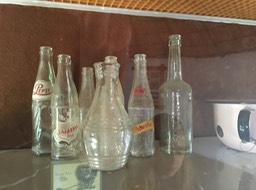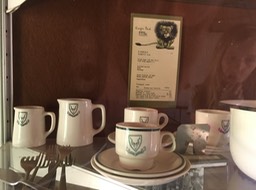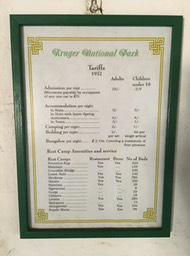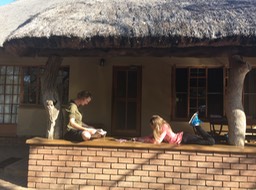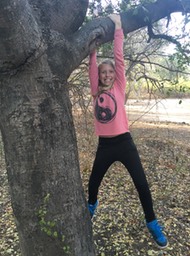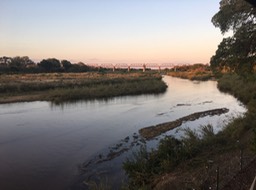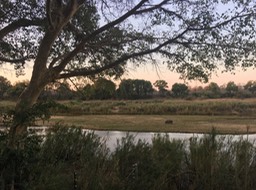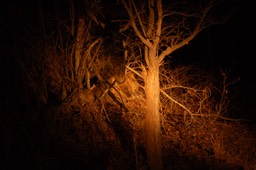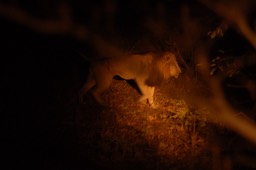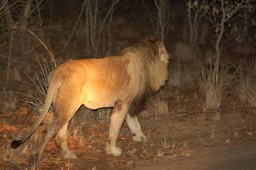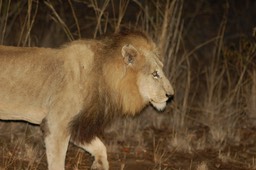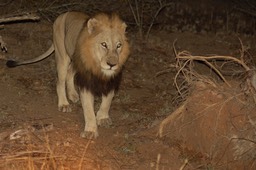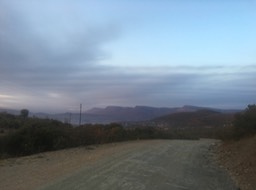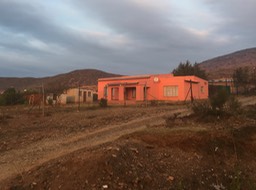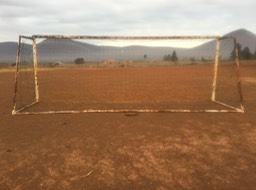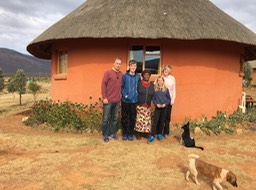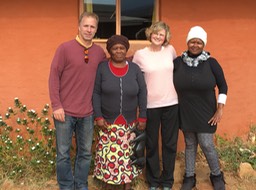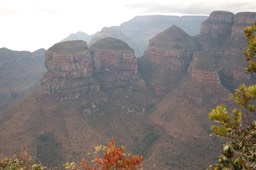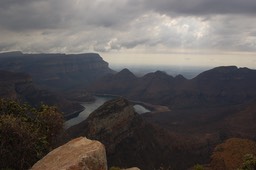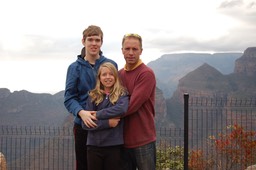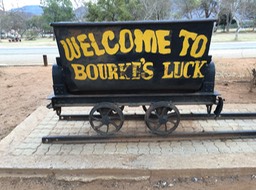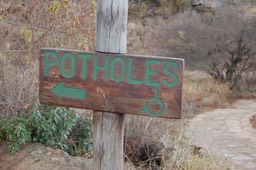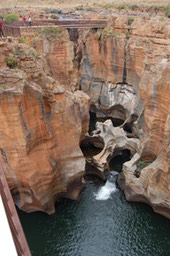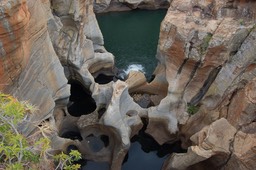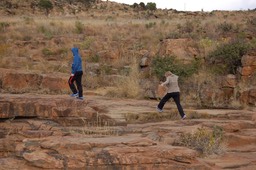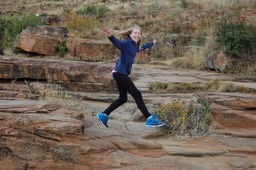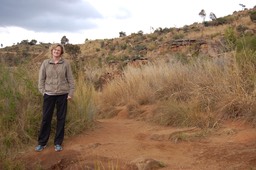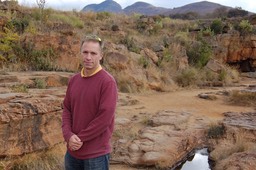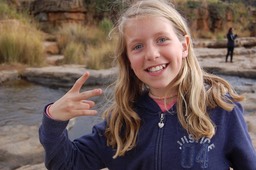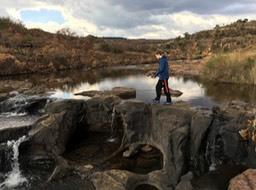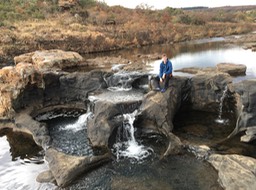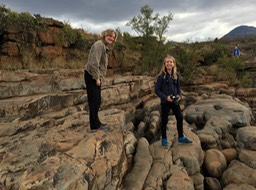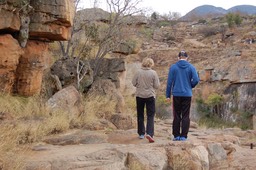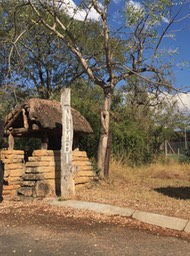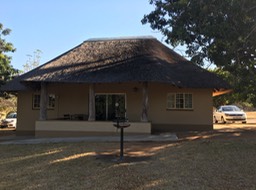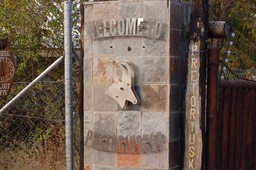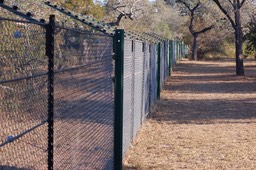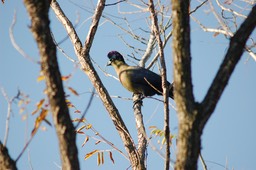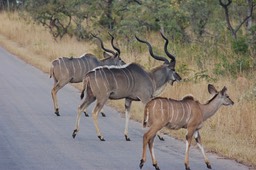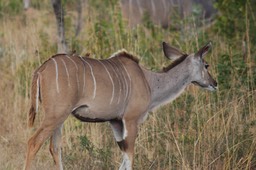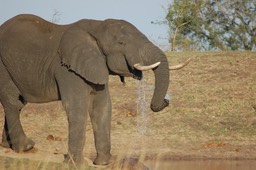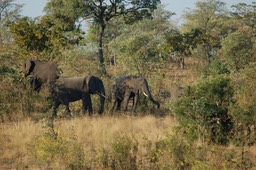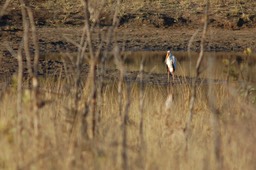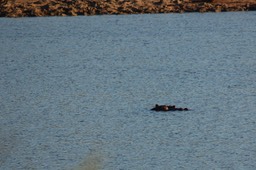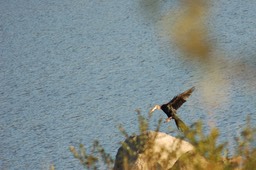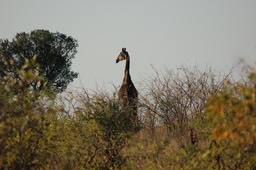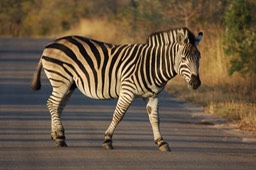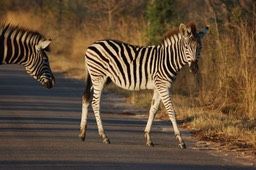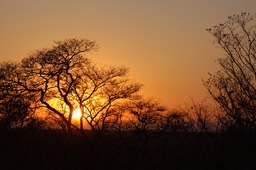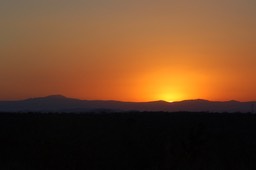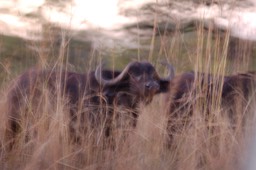Nine months, two homes
Experiments and a Final Goodbye
In a recent evening presentation, Mark discussed unprecedented levels of “experimentation” occurring around the world regarding sustainability, transitions, alternative economics, and energy. Many people, it appears, are noting the challenges faced by societies and trying small-scale solutions, prototyping a way forward: performing experiments. I’ve spent a lot of time thinking about this in recent days, and I believe there are some very good reasons for the phenomenon that Mark observes.
The first reason for experiments is that challenges are real and urgent. From CO2 emissions to stagnant wages to declining net energy to deforestation to extinctions to soil degradation to declining water quality to sliding economic growth, the problems are difficult and important, and both people and the planet have it hard the world over. Transitions to something better are needed, and problem-solvers and societal change agents try to fix things. Starting in their own backyard. On a small scale.
The second reason for experiments is that systems at all levels (firm, municipality/city, province/state, national, and world) are designed to reject destabilizing factors, to regard them as pathogenic. Full-scale transitions are resisted by entrenched interests, and, as a result, it is devilishly difficult to change today’s socio-political-economic regimes.
Third, and related to the second item above, society-wide transitions will take significant financial investment. Proposed transitions are, more often than not, comprehended as (financial) risks, and the recent instability of the world’s economic order contributes to risk aversion in decision-makers at all levels. It is perceived that there is simply not enough cash for a full-scale overhaul of our energy infrastructure, for example.
When the three elements above are combined, the only option for societal change agents is experimentation. Doing nothing is not an option! And they can’t risk being gobbled by the systems that reject transitions. They must remain small. They must experiment.
What I don’t know is whether, on balance, this is a good thing. We need to undertake significant, large-scale transitions now, at speed. But we’re not. On the other hand, I’m not sure we know exactly what should be done and how to make needed transitions without causing significant harm (unintended consequences!) to the planet’s human and non-human inhabitants. Thus it seems that experimentation around transitions is an important aspect of defining a new society; it provides a means of uncovering the way things ought to be and explores options for how to get there.
Which is precisely why, as a scholar, I find South Africa in general and Stellenbosch University in particular to be both incredibly rewarding and endlessly stimulating. Sustainability and energy issues are at or just beneath the surface always, the present water crisis being a good example. And there are at least three entities on campus actively engaged in important experimentation: the CRSES, where I was a visiting scholar; the Sustainability Institute, where I spoke and where I have several friends; and the Centre for Complex Systems in Transition, which shares a site with STIAS and where I had the fascinating meeting Friday with Jannie who asked “When are you coming back?” at our parting. (How is it that I connect with him on my LAST working day in the Western Cape?) The challenges faced by the world are big, but South Africa is small enough to see them up close and to have access to important decision-makers and creative thought leaders. I will miss so much the day-to-day immersion in these issues that stimulates my thinking and provides opportunities for collaboration. The time was, simply put, far too short!
Despite my deep sadness at leaving, I take heart from previous experience. In 2010, I was also sad, even resentful, at departing Stellenbosch. But it came to be that the end of my physical presence in South Africa was only the beginning of projects that continued without me; of further teaching opportunities (at CRSES in 2012); of additional visits (2014); of invited lectures to the CRSES Energy Policy module; of new, rich collaborations; of other invited talks; and of the courage to try new things: to experiment! So now, in 2016, I’m encouraged to think that the coming years will be full with more of the same. I’m sad but not bitter. Let the experiments continue!
For the above reasons and more, South Africa has been a very good friend to both Tracy and me throughout our careers. As I wrote from Ghana, “all of this raises the questions: how good of a friend am I? are you?” I have tried very hard to be as good to South Africa as it has been to me, to give back as much or more than I get. I can only hope that I succeeded.
To all the friends to whom I’ve said “goodbye” in the last few days: Dankie! (Thank you!) And to South Africa: Sala kakuhle! (Stay well!)
Now one final goodbye: to this blog. I’ve enjoyed writing, and I hope readers have enjoyed reading. “Until next time …”
—Matt
Half Marathon and Goodbyes (8)
This is my last day in Stellenbosch and a final packing day. But to start, I ran 13.16 miles, a half marathon. Just because! I had been slowly increasing my distances on weekend runs and made 10 miles two weeks ago. So I thought I would try the challenge of a half-marathon. I ran to the entrance gate and slightly into the Jonkershoek Nature Reserve to achieve the required distance.
Next, to Stellenbsoch United Church for a final time and more goodbyes. Then to purchase a newspaper for Tracy at Checkers. Then home to pack, bring stuff to storage at the Mechanical and Mechatronic Engineering Faculty (thanks Karin, for letting me in and taking a final photo in my “office”!), load suitcases, and depart for the airport at 7 PM for an 11-PM, 12-hour overnight flight to Amsterdam.
As in 2009, my luggage was overweight. One piece was 2 kg under; the other was 12 kg over. One can pay for an overweight bag, but only up to 10 kg. So I moved 2 kg from one to the other and paid the overweight charge, about $100. Ouch!
Sad to leave Stellenbosch. Not looking forward to the flight. Can’t wait to see Tracy, Mark, and Catherine.
—Matt
The Mill and Goodbye (7)
Much packing today: stuff to storage, stuff to Michigan.
And more goodbyes. I met Louis at the Mill Coffee House for a rooi cappuccino. He graciously used his well-earned loyalty cards (Mahala!) to cover the cost.
—Matt
K404 and Goodbyes (6)
This was my last day of work in K404. I spent much of it in my “office” on the porch, because the temperature reached 26 °C on this sunny day.
At mid-morning, I had an amazing meeting with Jannie at the Centre for Complex Systems in Transition. In our recent book, my co-authors and I used the metaphor “the economy is society’s metabolism” to interpret the economy through the lens of ecosystems and cellular respiration. Jannie, on the other hand, is a biochemist who writes articles titled “Regulating the cellular economy of supply and demand.” He studies the cell using market economies as inspiration for innovative models of cellular dynamics. We were amazed to find that we draw the same supply-demand graphs, albeit with flipped axes, when discussing the energy sector (me) and cellular metabolism (Jannie). Our one-hour meeting ran for two hours fifteen minutes. He was late to a faculty senate meeting.
I have been wanting to push the metaphor further but had not found the right collaborator. Today, Jannie said “You found the right guy.” It is too early to tell where this might go, but I’m thrilled about the prospects!
I spent a lovely evening with friends Riaan and Jeanne-Marie. Of course, we braaied: kudu boerewors, kebabs, a nice salad, and a cauliflower-rice dish. Then, more goodbyes!
—Matt
Ceres and Goodbye (5)
Ed and I packed our things and departed Gray Rhebok at 8:30 AM. Rather than returning to the Cape via the standard and faster route (N7), we decided to take dirt roads through Cederberg to Ceres, South Africa’s fruit basket. Ed had never taken that route, and I had never been to Ceres. After two hours through forbidding landscape, we descended to the Ceres valley. Throughout the journey, we marveled at the factory farming of apples, pears, and peaches; noted the desolation of remote farms; discussed South African politics; and simply enjoyed riding together.
The final pass into the Wellington-Paarl-Stellenbosch-Cape Flats-Cape Town area is called Bainskloof, named after Andrew Geddes Bain, the engineer who designed the road and supervised its construction. Like other Bain designs, Bainskloof Pass impossibly hugs the side of a cliff to provide safe transit over the mountain. Begun in 1849 and completed in 1853, convicts provided labor for its construction, and their graves are at the summit. The pass itself is a national monument.
After travelling through Wellington and Paarl, we stopped for lunch at Bistro 44, a little roadside restaurant that serves, among other things, Bobotie, the quintessential South African dish. Being both hungry and tired from the past two days, we enjoyed it immensely.
After a quick goodbye, Ed drove to Simonstown. I unpacked and did laundry. I have one more day at the office (tomorrow) before tidying the flat, putting stuff into storage, and packing for my flight. Only three days remain.
—Matt
Wolfberg Cracks and Arch
Wolfberg is a mountain in the eastern range surrounding the central valley of the Cederberg Wilderness Area. At its peak, there are several “cracks,” narrow passages through which hikers must walk to summit the mountain. Further along the Wolfberg crest, there is a natural arch feature that draws adventurers. We wanted to do both and return via the “alternative route.”
The ascent from the carpark to the cracks is steep and relentless, but it affords excellent views of the valley, with Dwarsrivier Farm in the distance and Ed’s car below. Halfway to the top, a massive block clings to the side of the mountain, having fallen millions of years ago. Ed was proud of his stylish hiking shirt until it began to chafe. Like yesterday, the route is marked with helpful cairns; one is always in view.
A final scramble to the top runs past an eroded cave and leads to red rock that forms the soaring walls of the approach to the cracks. We chose right, the crack that is wide enough to drive a bus through. We would have chosen left had we known it to be the narrower and more-challenging crack, a fact we surmised only after we were through.
The cracks take a few minutes of level walking to navigate. There is a window between the cracks, but the view into the valley is amazing. When you emerge, you’ve reached the top of the mountain and can look back. There is a helpful sign if you’ve walked the top of Wolfberg and desire to descend.
The climb from the car park to the cracks was about as high as the climb from Kirstenbosch to the top of Table Mountain. But the terrain is very different. Up Smuts Track, everything is green, a river runs through Skeleton Gorge, and the trail is wet. Up Wolfberg, there is no water, the ascent is unrelenting, and the walls both sheer and red. Because the space is rather confined, it is impossible to take a photo that provides a sense of scale for both the height and narrowness of the cracks. They were truly amazing.
However, ascending to and passing through the Wolfberg Cracks was only a small part of our day. At this point, it was only 10 AM, and we had a full day ahead of us. Our next destination was Wolfberg Arch.
The route from Wolfberg Cracks to Wolfberg Arch runs west northwest along the top of the mountain. This is walking on the level, and the well-marked trail passes a large cave while moving through a moonscape. Unusual fynbos and flowers, several balanced rocks, and animal prints decorate the alternating sandy and rocky path. The route is quiet, very quiet: the loudest sound is a footstep. Eventually, Wolfberg Arch is visible in the distance.
After another 45 minutes of walking and climbing, we reached the arch, a massive structure. We ate lunch, arriving at exactly Noon. As I lay relaxing in the sun for a few minutes, I looked up to take a photo of the top of the arch and looked out to take a photo of a distant koppie.
We took the “alternative route” down, adding more than an hour and at least three more kilometers to the hike. After a bruising descent that passes some of the few remaining ceders, we walked along a rocky/sandy Jeep track for many kilometers until we reached the car park! If we were to take this hike again, we would go down the way we went up. The alternative route was longer and offered no reward. But at 3 PM it was great to be done. We estimate that we covered 24 kilometers: 6 yesterday and 18 today. Add to that my 11.6 km run yesterday morning, and I’m at 35.6 km over two days. (That’s about 22 miles of running, walking, climbing, and descending.) Ed and I are tired, a little sore, but happy!
We returned to Algeria and the Gray Rhebok Cottage with its braai porch that overlooks a river and mountains opposite. I watched the sunset while preparing a braai of lamb and pork chops. Ed’s salad was awesome, the meat was done to perfection, and nothing was dropped into the fire! (Next time you see Ed, ask how many times he dropped the same leg of chicken into the fire yesterday. Hint: more than 2 and less than 4!)
We’ve had two extraordinary days with perfect weather and amazing scenery; I’ll never forget them. It has been fantastic spending time with a good friend in a stunning part of the world. Thanks, Ed!
—Matt
Maltese Cross
Dawn is the best time to run. Port Owen sunrises come over the many inland estuaries. Water from some is siphoned into pans for salt production.
The west coast of South Africa is known for its displays of Spring wildflowers, and Ed and I saw yellow, orange, and purple daisies, often arranged in blankes covering the roadside, as we drove. We saw several inland lakes sporting flamingoes and pelicans. We stopped at Elandsbaai and saw some unexpected human behavior: standing on water while outrunning a wave. (Amazing!) We saw rooibos and onion farms. We saw the Clanwilliam Dam which was spilling its water rather liberally.
Our destination was the Cederberg Wilderness Area which we reached about Noon, in time for lunch but too early to occupy our cottage and too early to obtain permits for a hike to the Maltese Cross (available only at 2 PM). So after a quick lunch and after stuffing our perishables into the fridge, we decided to head south.
Our first stop was the Stadsaal (City Hall) Caves at which Ed displayed his affinity for biltong. These caves are famous for the San rock art arranged on the walls. A well-preserved example shows more than a dozen people and six elephants, huge in size (about six feet wide) and breathtakingly beautiful. Other examples showed a lone archer and an archer taking aim at an eland.
These caves are the site where the National Party was born in the early 1900s. This is not verdant country; aside from the fynbos, it is a moonscape, and the NP schemers would have been left alone here. To immortalize their presence, several scrawled their names in the stone, including D.F. Malan (25 October 1919) who was later to be prime minister (1948—1954), the first apartheid leader of South Africa.
We needed to obtain permits and move to the trailhead, but we stayed longer at the caves than we should have done because they were so very interesting. We reached the end of the Jeep track and starting point for the Maltese Cross hike only at 3 PM; our goal had been 2 PM. Ed’s book indicates the hike should take 3.5 hours round trip. With sunset at 6:15 and unsafe temperatures to follow, our dallying at the caves put us in danger of missing the cross. We decided to set out anyway. We were not disappointed by that choice.
The route provides majestic views of the unforgiving landscape, and it took only 1 hour 10 minutes to reach the cross. Hundreds of small cairns indicate the preferred path.
The cross is a huge sandstone formation in the middle of an amphitheater of fynbos and rock. It is almost as if the nearby (much shorter) rocks are bowing down to the cross itself. We approached from the east, meaning the the cross was backlit by the late afternoon sun. I went around to photograph the sunlit side as Ed stood at the foot. Can you find him? There he is. It appears that someone (amazingly) scaled the cross and installed rope at the top.
After I took a selfie, we departed and headed back down. Along the way, we saw an extremely rare Cape rock hopper. At the bottom, the low sun provided nice lighting for a photo of me. Ed took the last few steps along the path toward our car. As we crested the pass driving back to our cottage, one final treat: a take-your-breath-away sunset. I gasped when I looked up to see it.
Of course we braaied for dinner and of course it took forever. We ate at 9 PM, and it is now 11:30 as I finish this post. It was a day I will remember forever.
—Matt
Seminar and North!
I gave my second talk at Noon today. I was glad of putting in the effort and practice yesterday; pacing and timing went well.
Thereafter, Ed picked me at the flat and we headed north through Klipheuwel to Malmesbury to Port Owen where we’re staying tonight. On the way, we saw two wind farms, one of which I photographed against the late afternoon sun. Ed and Viv intend to build a new home in Port Owen, and we checked out the land. The sunset was stunning.
After dinner we made some plans for our Cederberg adventure. I’ve never been there, and Ed hasn’t been in forty years. We’re both looking forward to it. The weather looks to be perfect: three days of mid-20s and sun, sun, sun.
—Matt
Coopmanhuijs and Goodbyes (4)
After attending Stellenbosch United Church this morning, I worked on tomorrow’s noon presentation. Good thing, too. I made significant changes after a couple dry runs through the material. Rain was today’s weather feature, and I didn’t mind staying inside.
For dinner, I went Helena’s Restaurant at Coopmanhuijs Hotel with collaborator Stan. We had a great time chatting about the history of South Africa’s democratic transition, our research projects, and my Forum presentation.
After tomorrow’s presentation, I’m off to hike in the Cederberg Wilderness Area with friend Ed. Blog updates are unlikely until end of the week.
— Matt
Goodbyes (3)
With two public lectures in four days, a big picture presentation yesterday and a technical research-y presentation on Monday, I’m doing nothing but composing slides. Keynote and R/LaTeX/Beamer are my frenemies.
It was a shame to be working during another high-quality Western Cape day. But I made the most of it, preparing my talk in the garden near the mountain stream that runs through town. The birds of paradise kept me company.
Although I spent the day working on my technical lecture, I spent the evening with Richard and Sherine. They kindly invited me for dinner as a way to say goodbye. Richard and I took a short walk through their neighborhood to overlook the Durbanville valley. From that point, Table Mountain is barely visible over Tygerberg. The sunset was beautiful and the food was great. Thanks Richard and Sherine!
—Matt
CRSES Forum and Goodbyes (2)
This afternoon, I went to the Sustainability Institute for “coffee” (in quotes because I don’t drink the stuff) with Jess, a participant in 2009’s Sustainability Think Tank who is now the Institute’s director. I enjoyed reminiscing about our stunts (using pizza to get a meeting with the Vice-Chancellor) and successes and hearing all of the wonderful things that are happening at Lynedoch.
After coffee, I gave a lecture in the CRSES forum series at the Guesthouse Lecture Room. My title was “Energy and the Macroeconomy: Five Propositions.” About thirty people attended, including friends Louis and Riaan, students from my Thermal Energy Systems module, students from UCT’s Energy Research Centre, engineers from Sasol, employees of Eskom, and friends and colleagues at CRSES. The talk went well, and good questions followed. A reception afterward allowed additional conversation and discussion. There are some photos below.
Wikus organized a goodbye dinner at Terroir at Kleine Zalze with himself and his wife Heidi, colleague Alan and his wife Muriel, and executive student and Eskom employee Vikesh (who is now on the Wind course). The setting was beautiful, the food was amazing, and the conversation was interesting, fun, and humorous. As Wikus and Heidi are headed out of town, I won’t see them before I depart. I will miss them a LOT. Thanks for your friendship! “Until next time …”
—Matt
Goodbyes (1)
This was an absolutely lovely Western Cape day. The air was dry, the sky was blue, and the mountains were stunning. I spent much time in my “office” on the fourth floor deck.
I went to Col ’Cacchio this evening with friends Amanda and Louis. As I was walking to the restaurant, I saw the full moon above a Cape Dutch building. The dinner provided an opportunity to say goodbye to Amanda who will be away on my remaining days in Stellenbsoch.
Tracy and I have known Amanda since graduate school and Louis since 2007. It is a huge blessing to have longtime friends in Stellenbosch!
—Matt
Energy Committee
I attended the University of Stellenbosch energy committee meeting today. I have met with some of the people around today’s table through the years, so I was curious about their progress. I was pleasantly surprised.
In 2009, the committee did not exist and there were no specific goals or targets. But now there is a committee with ambitious and time-specific goals for reducing greenhouse gas emissions, energy consumption, and energy expenditures. And a student representative from ecomaties attended the meeting!
Challenges remain, though. The reduction targets are not on any administrator’s list of key performance indicators. The full benefit of the targets is not being realized, because they are not used for management purposes. And bureaucratic hurdles are delaying progress. But the trajectory is good. I trust that the challenges will be overcome through time.
Like Monday, another fun and interesting day.
—Matt
Pink Jasmine
Deeply fragrant pink jasmine is blooming in the garden of our flat. At every pass, I’m reminded with some sadness that neither winter nor I is long for the Western Cape.
I attended a lecture by old friend Mark in the evening. It was great to see Luke (who in 2009 took a photo of our family with our weekly groceries for an exhibition), Jess, John, Ralf, and others at the event.
—Matt
SARETEC
This afternoon, Wikus took me to the South African Renewable Energy Technology Centre (SARETEC) at the Cape Peninsula University of Technology (CPUT). The Centre is fairly new, and some aspects of the building are not yet complete. Regardless, it was great to see the facility and talk to those involved.
My connection to the Centre is that I worked on a business plan in late 2009 (completed in January 2010) for what would become SARETEC. At the time, I held a dual appointment, part time as an instructor at CPUT and part time in the Centre for Renewable and Sustainable Energy Studies (CRSES) at the Univeristy of Stellenbsoch. I wrote the business plan in my role at CRSES using what I knew about the people and processes at CPUT. (My original name was South African Renewable Energy Training, Research, and Education Centre, SARETREC.)
Since that time, Wikus at CRSES and others at GreenCape secured a site and funding. German personnel supported by international development money and in cooperation with several from CPUT established a curriculum, developed training materials, and designed and built a state-of-the-art facility.
Part of my effort on the business plan was to identify potential leaders and instructors for SARETEC. One such person was Sven who led our tour of the facilities. We saw the workshop, lecture theatre, electrical lab, hydraulics lab, and classrooms. In 2009, I also met with Eskom to inquire about transfer of the Klipheuwel site to CPUT for the purpose of establishing SARETEC, a plan that never materialized. But Eskom has donated their Jeumont turbine which arrived recently. SARETEC will provide height training from its tower and maintenance training with its nacelle. In recent months European turbine manufacturers have expressed interest for SARETEC to train technicians for employment at wind farms throughout all of Africa and South America. Best of all, I learned that every member of SARETEC’s first graduating class are now employed on wind farms in South Africa. And a second class with 18 new students started today.
In the executive summary of the 2010 business plan I wrote:
SARETREC provides the rare opportunity to address all three pillars of the triple bottom line in a single entity:
• economic development (via the renewable energy industry),
• environmental responsibility (via clean energy), and
• social responsibility (via education and training).
That’s as true today as it was then! I’m pleased to have played a small role in making SARETEC happen.
—Matt
Do Differently
At dinner on the second-last day Tracy and the kids were in Stellenbosch, I asked each member of the family what they would do differently next time we come to South Africa.
Catherine:
• Visit Boulders Beach
Mark:
• Climb Table Mountain via the India Venseter route
• Visit Boulders Beach
• Go scuba diving
• Explore caves
• Go ziplining somewhere
Tracy:
• Explore Cape Town and the Cape Peninsula
• Visit more wineries
Matt:
• Summit Simonsberg
• Stay longer!
There is so much great stuff to do in the Western Cape, and two months wasn’t enough!
—Matt
Simon Van der Stel
On sunny mornings, the walls of the Jonkershoek valley display countless greens and browns of fynbos and rock. Today, thick clouds rendered them each a shade of gray. But about three-quarters of the way through my 10-mile run, the sun emerged as I passed Van der Stel Manor, a beautiful Cape Dutch guest house on Van der Stel street in the Mostertsdrift neighborhood of Stellenbosch.
Manor, street, and town are named for Simon Van der Stel, commander and first governor of the Dutch Cape Colony. Same for Simon’s Town and Simonsberg. He is an important figure in the history of the Western Cape. In 1865, Van der Stel was granted Groot Constantia at which he developed a vineyard that remains the oldest wine-producing estate in South Africa. Today, the South African wine industry is an important part of the economy, having flourished since apartheid ended, sanctions were lifted, and trade with the rest of the world began anew.
—Matt
Sasol
My sabbatical research project concerns energy flows through the South African economy. One such energy flow is fuel (both petrol and diesel) for both transportation, machinery, and other uses. The South African company Sasol is one of the premier suppliers of fuels in the nation, having commercialized the Fischer-Tropsch process for converting coal to liquid (CTL) fuel and having pioneering gas to liquids (GTL) technology as well.
Forecasting liquid fuel demand into the future is important for Sasol, as it enables facilities and production planning. To that end, they have developed a so-called “car parc” model that predicts the number of vehicles in the South African fleet in any year, their fuel efficiency, and their usage (in kilometers). With that information, forecasts of fuel demand are made.
However, I need historical vehicle usage and efficiency back to 1971, disaggregated by vehicle type. So it was that I met with two Sasol engineers this afternoon to discuss their parc model and brainstorm ways to develop a backcasting model of fuel consumption and vehicle efficiency for the nation. I appreciate the time that Arthur and Gareth spent with me. They are doing some really interesting work in Muizenberg.
I snapped a photo of the exterior of the Sasol research facility after my meeting. No photos are allowed inside!
—Matt
Top Three
At dinner on the second-last day Tracy and the kids were in Stellenbosch, I asked each member of the family for their top three things about South Africa.
Catherine:
• Bingle
• Stilbaai
Mark:
Tracy:
• Research interviews/Wine tasting with dogs
Matt:
• Stilbaai
Also it was a gorgeous winter day in Stellenbosch!
—Matt
Goodbye
Catherine, Mark, and Tracy just left our flat, headed for the Cape Town airport and the long trip home. Of course, more piles were created.
Mark was excited to see his friends. Catherine was in tears about leaving without me. Tracy was apprehensive about three plane rides with the kids. But Catherine has a new game on her iPod (Parking Simulator 2), Mark has a new book, and Tracy has plenty to read. I trust they’ll be fine.
It’s very quiet now.
—Matt
Update: Not so quiet any more! I got a frantic call from Tracy at 8:30 PM. The immigration office needed my permission for the kids to leave the country with her and without me. (Concerns about child trafficking are the cause.)
So, I crafted a letter stating my consent, printed to .pdf, added an electronic signature (thanks to Apple’s Preview app), attached a photo of my passport and driving license, and emailed. To a gmail address! That’s right: immigration uses gmail for its operations! Really?
Tracy took the my letter to immigration control and, ultimately, the South African Police Service. At 9:12 PM, she texted the following: “Got it. I think we're all set. It seems like we can’t leave an African country without visiting the police and tusseling with immigration. Arrgh!”
As their departure is 11 PM, there is plenty of time to spare. I guess that’s why it’s important to arrive early for a flight.
Second-last Day
This is the penultimate day for Tracy, Mark, and Catherine in South Africa. To celebrate, we went for dinner at Hussar Grill.
Earlier in the day, Catherine saw Bingle one last time. And she went with Mbali to Strand Beach for ice cream. Mark enjoyed texting with friends in Michigan, anticipating his arrival. Tracy packed, and I helped with a few things around the house, this being a national holiday.
It will be very sad to see them go, and the flat will suddenly feel very big for just me.
—Matt
Packing
Although (or maybe because) she stayed up until 2 AM, Catherine had great fun on her sleepover. Tracy fetched her at 9:30 AM but stayed and talked with Bob and Liana for more than an hour.
Tracy has begun packing in earnest for her and the kids departure on Wednesday.
On Saturday, the day after our return from Kruger Park, Catherine wrote a list of things she might want to do:
* Rock climbing
* Butterfly world
* Snake Park
* Lion Park and Chimp Park
* See Bingle
Bingle was her highest priority, so we took him for a walk.
—Matt
Dinner with Richard and Sherine
After church this morning, we went to the outdoor restaurant at the Stellenbosch University botanical gardens with friends Bob and Liana and their daughters Catherine and Julia. After lunch, Catherine was invited to a sleepover, Monday being a day off school in anticipation of Tuesday’s Women’s Day holiday.
Tracy and I were invited to dinner with my colleague Richard and his wife Sherine. But, before arriving at their house, we went to the Durbanville Hills winery and took advantage of their observation deck for a couple photos.
We had a very pleasant dinner with great conversation and much laughter. Thanks Richard and Sherine!
—Matt
So Many Animals
Here is our estimate of Kruger Park animal quantities. Birds not included.
Baboon: 90
Buffalo: 120
Bush Baby (Lesser): 5
Bush Pig: 4
Cheetah: 1
Civet: 3
Crocodile: 30
Duiker: 5
Elephant: 35
Genet (Large Spotted): 2
Giraffe: 10
Hippopotamus: 100
Hyena: 7
Impala: 500
Jackal: 1
Klipspringer: 5
Kudu: 35
Leopard: 6
Lion: 2
Rhinoceros: 4
Scrub Hare: 10
Steenbok: 5
Vervet Monkey: 70
Warthog: 20
Waterbuck: 15
Wildebeest: 25
Zebra: 30
—Matt
Lower Sabie —> Stellenbosch
Shortly after dawn, we made our way from Lower Sabie rest camp to the Crocodile Bridge gate. Before departing, I took a picture of our accommodation, and we snapped one last family photo on the deck above the Sabie river. (There was yet another leopard sighting ongoing!) After about an hour of driving, we put Kruger Park in the mirror. Then, a five-hour drive to Johannesburg, which took about six and a half due to stops and refueling. We waited more-or-less patiently at the airport to depart.
On the Mango Airlines flight to Cape Town, Catherine made an eight-year-old friend from Pretoria, and they enjoyed sitting together for the last hour and a half of the trip. Tracy’s flight was scheduled to depart Joburg two hours later than ours, but she had an hour delay. So, Catherine, Mark, and I waited in CTN for much longer than we wanted, arriving in Stellenbosch at 1:30 AM tomorrow! After a long day of travel, we were happy to be home!
A few days ago, I wondered if all the planning would be worthwhile. It was!
—Matt
Lower Sabie, Day 2
This day began early, very early. 4:20 AM to be precise! The sunrise drive started in the darkness at 5 AM with spotlights. Petrus again led. No animals of note were seen on the early part of the drive. However, the dawn provided an opportunity for beautiful image-making. I saw this lone, dead tree on the outbound portion of our journey. Because we flew past it at 40 km/hour on the return trip, I had only one chance to make this photo. I nailed it with my 85 mm f/1.8 lens. Priceless!
Prior to sunrise, we saw white rhino and elephants on the move. As the sun rose, Petrus told about rhino toilets. After sunrise, we saw a giraffe and hippos in the watering holde near Lower Sabie. Vultures waited in trees. What for?
Turns out, there are at least three leopards hanging around west of Lower Sabie. We found the first lounging. His overnight kill (a male impala) was in the tree above! We spotted a second leopard sitting atop a termite mound. A third leopard was sleeping in a tree.
Although there was some complaining, both kids were good sports about waking early for the cold drive. With all the leopard sightings, the scheduled three-hour drive turned into a four hour marathon. But it was worth every minute! Thanks, Petrus!
In the late afternoon, Catherine, Tracy, and I decided to go out once more. Our thought was to check on the leopards. Leopard No. 1 was laying in the sand beside the road. Vultures were again waiting, probably for the kill that Leopard No. 3 was now eating in its tree. We could hear the bones crunching in its powerful jaws!
We went back to Leopard No. 1 who had shown some interest in a herd of passing impala. But, it was settling down for a nap.
A return trip to Leopard No. 3 found a hyena arriving on the scene, presumably waiting for scraps to fall from the sky! The route to the base of the tree was blocked by the human traffic jam, causing some anxiety. As we drove away, a second hyena showed up.
As it was now 5:30 and rest camp gates close at 6 PM, we headed back to Lower Sabie. (Petrus, who had arrived on the scene with today’s sunset drivers, remained with Leopard No. 3 long after the guests departed.) Before entering the gate, we stopped one more time at the watering hole to find hippos and a stork silhouetted against the sunset. At the car park, I snapped a final photo of the rising crescent moon.
It is truly amazing to see one leopard, let alone three in a single drive. We are so blessed to have this experience. As the South Africans would say, “Fantastic!"
—Matt
Update: My Dawn photo has been featured on South Africa’s Wild Card website.
Skukuza —> Lower Sabie
After the yesterday’s night drive, most slept in. I took a morning run where I saw a wonderful sunrise over the Sabie river.
Today is local election day in South Africa. As I ran around the rest camp, a queue formed at the Independent Electoral Commission polling station. We checked out of Skukuza at 10 AM, our destination being Lower Sabie where are spending the last two nights of our time in Kruger.
As we approached Lower Sabie, the weather became warmer and the vegetation changed markedly. It is dry in Kruger, very dry. Only the largest rivers and dams contain water; vegetation is mostly brown; dust and sand are the rule rather than the exception. We went long stretches without seeing any animals. At a snack shop between Skukuza and Lower Sabie, we took a family photo. Near Lower Sabie, we saw a lone hippo making its way to the Sabie river.
Less than 2 km away from the camp, we saw a small traffic jam. Knowing that rare animals can usually be found near humans, we also stopped to look. A cheetah made its way in the sand along the bank of the Sabie. This was truly amazing, as neither Tracy nor I have seen a wild cheetah before. We watched for several minutes as it walked, paused, and walked some more. Amazing!
Just outside the Lower Sabie gate is a dam that serves as a watering hole, essential at this time of year. Thereat, we spotted several crocodiles on the bank. Next stop: the camp.
We decided to change our night drive reservation to a sunset drive, because the night drive returns at 10 PM while the sunset drive returns at 7:30 PM. With a 5 AM start time for tomorrow’s morning drive, an earlier return seemed prudent.
Our guide was Petrus, an affable and skilled leader. We saw waterbuck, and a lazy lion on the opposite bank of the Sabie. (In my opinion, the lion barely counts, because it was so far away. In fact, I never properly saw it until I looked at the photos later!) We came upon a male elephant with a pierced ear, probably caused by a rival’s tusk. We also saw a giraffe.
Then things got really exciting. We encountered a leopard sleeping on a branch! After a time, it moved to climb down the trunk. After a pause, it continued down and headed into the bush, presumably to hunt. Amazing!
As we moved on from the leopard, the sun set, providing a nice view of vultures preparing to scavenge a kill. And we got a reminder of just how deadly the bush can be. We saw a hippo carcass, evidence of the draught earlier this year.
All in all, this was an incredibly interesting day. We’re grateful to Petrus for his knowledge and humor on our sunset drive!
—Matt
Pretoriuskop —> Skukuza
As we stepped out of our cottage for an early-morning drive, we saw a buffalo just outside the fence, likely a member of the massive herd moving through the Pretoriuskop area. Just beyond the Pretoriuskop gate, we saw a few impala and more buffalo.
Later, we came upon boulders among which an elephant was climbing for food. From a distance, the elephant looked like another rock! On the other side of the bounders, we found a rhino atop other rocks. Seems like this was the morning of the massive, rock-climbing, gray mammals.
As we were heading back to Pretoriuskop, Catherine spotted a herd of zebra, and we went for a closer look. They were eating grasses, moving slowly through the bush. We saw another foal, and Catherine memorialized the primary food source for so many herbivores. On the two-and-a-half hour drive, we saw playful vervet monkeys, giraffe, wildebeest, warthog, kudu, and yet another elephant. At two different dams, we saw waterbuck, two crocodiles, kudu, and several hippos.
Shortly after lunch, we arrived at Skukuza and checked in to our cottage. Skukuza is the oldest and largest camp in Kruger Park. They have a “museum” of sorts comprised of an original hut with beds. Old bottles and tableware can be found inside. I wish we were paying the tariffs from 1932!
Because of our coming night drive, we spent the rest of the afternoon relaxing. Tracy read while Catherine worked on a craft. She climbed a few trees. Before taking dinner at the rest camp’s take-away, we strolled the Sabie River boardwalk where we saw a stunning sunset, a juvenile hippo, several giraffe, a crocodile, and a leopard! It was patrolling on the opposite river bank from us, visible in clearings amidst the grass. (The leopard was spotted by someone who works at the restaurant.) This was the first leopard that Tracy and I have ever seen. Sadly, I didn’t have my good camera with telephoto lens, so there are no photos to share. Besides, it was pretty far away.
At this point, we had seen four of the so-called “big five” animals (elephant, rhino, buffalo, and leopard). Only lion remained.
Our Kruger Park reservations include two night drives and a morning drive. Our first night drive started at 8 PM. As we boarded the bus, Catherine said “I can’t smile as big as I am happy!” The ranger asked Mark to hold a spotlight, and he found our fist animal, a civet. We saw an elephant, bush babies, untold numbers of antelope, and a genet.
At about 9:45, on the home stretch of the two-hour drive, we heard the roar of a very-close lion. After searching the bush with the spotlights, we found it, a very healthy male. After a short bath, it got up to walk along the road, marking its territory as it went. We drove beside it for about 10 minutes before it moved back into the bush. The beast clearly had no fear of us and paid very little mind to us. We kept a wide-enough berth and were treated to a wonderful sighting.
Big five? Done!
—Matt
Kgautswane —> Pretoriuskop
While others slept, my day began with a dawn run into the mountains around Kgautswane. As the sun rose, it illuminated a peach-colored home and the soccer pitch near Bama Lodge. After breakfast, we took an extended family photo and a hosts-guests picture.
We departed Kgautswane and headed northeast toward the Blyde River canyon and its tourist sites. The first is the Three Rondovels, a natural feature along the Blyde River. The overlook provided the scenic location for another (nearly) family photo. The fence is a new and needed feature since our last visit to the site in 2007.
The next stop on the road to Kruger is Bourke’s Luck Potholes. After paying the entrance fee, we moved across walkways to see the spectacular sandstone formations caused by centuries of swirling water. We enjoyed clambering and jumping on the rocks above the falls. Catherine played director and photographer with Tracy and me as models. She has a message for all the haters! Mark walked atop the waterfall and posed. Tracy and Catherine watched, and mom and son walked back to the car.
After a quick pancake lunch, we drove to the Numbi Gate of Kruger National Park where we checked in to our cottage at Pretoriuskop. All rest camps in Kruger Park are surrounded by fences, keeping the dangerous people where they belong! After unpacking and settling, Catherine climbed a tree, and we saw (what is probably) a purplecrested lourie.
During a two-hour drive in the park, we saw a herd of kudu, several sporting oxpeckers. We saw an elephant drinking sloppily at a watering hole, separated from its herd. We saw a yellowbilled stork, a hippo, and another unidentified bird that swooped across the water. After a time, we spotted a giraffe, a zebra, and its foal. We stopped briefly to watch the African sunset.
As we returned to Pretoriuskop, we drove through a herd of buffalo, probably numbering in the hundreds. Unfortunately, because of the coming darkness, none of our buffalo photos is very clear.
After dinner at the Wimpy restaurant, Catherine and I stargazed, seeing the Milky Way, Mars, and a few satellites. Negligible light pollution makes sky viewing a pleasure when you are miles from civilization.
At this time of year, the park is uncrowded; there are only a few other occupied cottages. But the arid environment provides excellent game viewing. A great combination!
As I finish writing tonight, everyone is in bed, and I haven’t heard this much quiet in years. Kruger Park is a special place, and we had a stunning day. Lots to be thankful for.
—Matt
